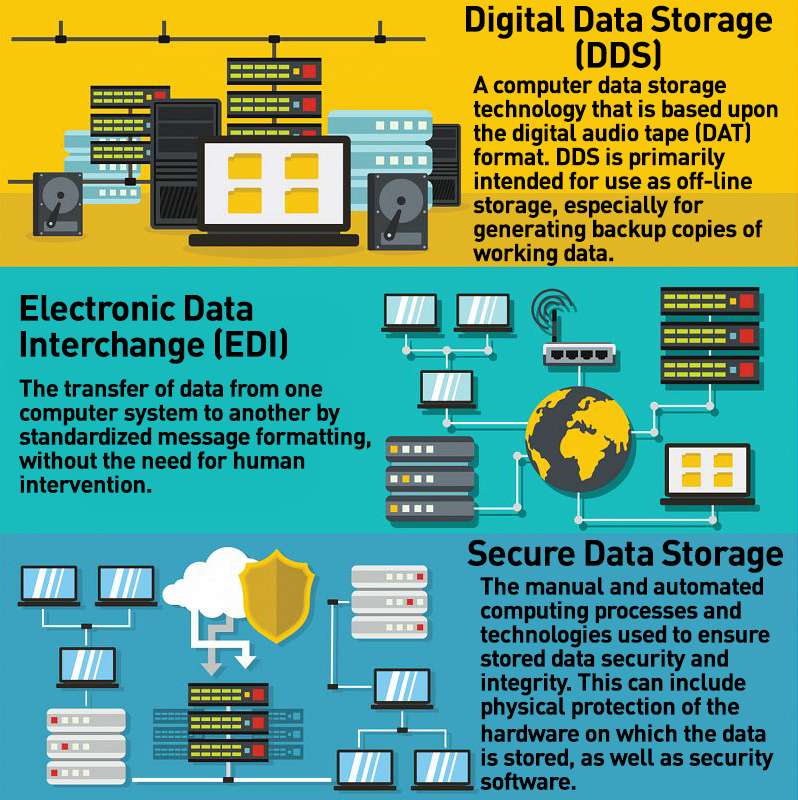Why Data Destruction is a Crucial Element of Comprehensive Cyber Security
Why Data Destruction is a Crucial Element of Comprehensive Cyber Security
Blog Article
The Value of Effective Information Damage Practices in Safeguarding Sensitive Info and Ensuring Computer Safety
In a period where information breaches are increasingly common, the relevance of efficient data damage practices can not be overemphasized. Carrying out robust information devastation techniques not only mitigates these threats yet likewise aligns with legal compliance demands, making sure that companies promote their reputation and foster client count on.
Comprehending Data Destruction
Understanding data devastation is critical in today's digital landscape, where sensitive info can quickly be endangered. Efficient information damage involves not just making certain however removing files that information is irretrievable with comprehensive techniques. This procedure is necessary for organizations that take care of private customer information, intellectual residential property, or internal files, as any kind of breach can bring about severe economic and reputational repercussions.
Information destruction incorporates various methods, consisting of shredding physical media, degaussing magnetic storage space devices, and utilizing software-based solutions that overwrite data several times. Each method offers a particular objective and should straighten with the sensitivity of the details being disposed of. For instance, physical destruction is typically preferred for disk drives having extremely personal data, while software techniques could be sufficient for less delicate information.
Additionally, sticking to sector requirements and laws, such as the General Data Security Guideline (GDPR) or the Medical Insurance Transportability and Liability Act (HIPAA), is crucial for conformity and to mitigate lawful dangers. Organizations should develop a robust information damage policy, train staff members on finest methods, and routinely audit their treatments to make sure that all sensitive information is disposed of securely and properly.
Threats of Inadequate Practices
Inadequate information damage practices reveal organizations to significant threats that can have far-reaching consequences. When delicate details is not correctly gotten rid of, it remains at risk to unauthorized accessibility, which can result in information violations and identification burglary. Such occurrences not just endanger the safety of individuals however also taint the company's track record, resulting in a loss of client trust and prospective economic consequences.
In addition, regulatory conformity is increasingly rigid in numerous sectors. Failure to follow data damage laws can lead to substantial fines and lawful activities against organizations. These fines can draw away and strain monetary sources focus from core company procedures.
Additionally, the abuse of residual data can bring about intellectual property burglary or corporate reconnaissance, jeopardizing affordable benefits (data destruction). The impact of insufficient information damage expands past immediate economic losses; it can also lead to long-term damages to brand name integrity and market position

Organizations need to identify that information security is not solely regarding stopping violations; it additionally incorporates the liable monitoring of information throughout its lifecycle. Overlooking efficient data damage protocols can have devastating ramifications, highlighting the need for durable actions to minimize these threats.
Ideal Practices for Information Devastation
Implementing reliable data devastation techniques is essential for protecting delicate info and preserving compliance with regulative requirements. Organizations should embrace a multi-faceted method to guarantee that information is irretrievable, therefore preventing unauthorized gain access to and prospective next page violations.
First, information need to be categorized based upon level of sensitivity, permitting companies to use suitable destruction methods tailored to the level of risk. For electronic data, utilizing software-based data-wiping devices that conform with industry criteria can efficiently overwrite existing data. Physical devastation techniques, such as shredding or degaussing, are essential for tools that keep delicate info, guaranteeing full removal.
Developing a clear data retention plan is important, describing exactly how long different sorts of information must be kept prior to destruction. Normal audits of data storage systems are additionally needed to identify unneeded or out-of-date data requiring removal.
In addition, training employees on the importance of information destruction and the certain methods to comply with fosters a society of safety within the company. Lastly, maintaining paperwork of information damage refines provides responsibility and sustains compliance with internal policies and exterior regulations. By adhering to these ideal practices, companies can considerably minimize the risks related to data exposure.
Legal and Compliance Factors To Consider

Failure to abide by these regulations can result in extreme charges, including considerable fines and reputational damage. Organizations must carry out a Related Site robust data damage plan that straightens with these legal frameworks and supplies clear standards on the proper techniques Visit Your URL of information disposal, whether physical shredding or digital wiping.
Additionally, keeping documentation of data damage tasks is essential for demonstrating compliance during audits or assessments. By focusing on lawful and conformity considerations, organizations can improve their information security position and foster trust fund with customers and stakeholders, ultimately adding to a much more safe information monitoring environment.
Advantages of Effective Information Devastation
Effective data devastation techniques extend past mere conformity; they offer considerable benefits to organizations that prioritize them. By making sure that sensitive information is irretrievably ruined, organizations reduce the danger of data breaches and the prospective economic consequences connected with them. This aggressive method not only safeguards against unapproved gain access to yet additionally boosts the total trustworthiness of the organization in the eyes of clients and stakeholders.
Executing robust data destruction methods, such as physical destruction of storage space tools or sophisticated data wiping techniques, adds to the strengthening of a company's cybersecurity stance. data destruction. It reduces the possibility of intellectual property theft and shields exclusive info, thus preserving an one-upmanship on the market

Conclusion
In final thought, efficient information damage methods are crucial for guarding delicate details and boosting total computer system safety. Eventually, a commitment to robust data devastation approaches promotes a culture of obligation, thereby enhancing an organization's cybersecurity stance and preserving client trust fund.

Report this page